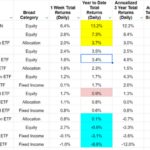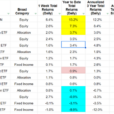
It is a fact of nature that all countries have the same electromagnetic spectrum of radio frequencies. It is a fact of politics that countries have different rules for allocating these frequencies. And it is a fact of economics that people in different countries pay very different rates for their use of spectrum. Mara Faccio and Luigi Zingales ask: “Why does the price of the same basket of mobile phone services vary around the world from $10.07 to $47.25? Why does the price of a 1GB mobile-broadband internet plan vary from $11.24 to $100.28?” They investigate the question in a January 2017 working paper “Political Determinants of Competition in the MobileTelecommunication Industry,” available from the Stigler Center for the Study of the Economy and the State at the University of Chicago Booth School of Business. For those who prefer to get their economics via cartoon, the most recent issue of the Chicago Booth Review has you covered with on this topic.
Countries can affect the competitive situation of telecommunications industries in many ways, including the rules that govern entry, the extent of price regulation, whether phone numbers are easily portable when shifting between carriers, whether voice-over-internet calls are permitted, and so on. These rules vary substantially across countries. Faccio and Zingales write: “[E]very time one crosses a national border in Europe the roaming company of the mobile phone changes. In spite of the European integration process, the mobile communication industry remains segmented at the national level. This is not unique to Europe: throughout the world, the mobile communication industry remains very much segmented by country.” Another reason to focus on mobile phone and broadband is because the availability and quality of these services can be readily across users in different countries.
Indeed, they have data from the International Telecommunications Union available for 148 countries that includes dozens of variables in They have data on five main categories of variables in each country: regulatory climate; competitive structure; quality of service; spectrum auctions; and broad institutional characteristics (democracy, unions, tax rates and more). Thus, they offer a lot of statistical tables to make their case: “We show that the way a government designs the rules of the game has an impact on concentration, competition, and prices. Pro-competition regulation reduces prices, but does not hurt quality of services or investments. More democratic governments tend to design more competitive rules, while more politically connected operators are able to distort the rules in their favor, restricting competition.
But beyond the statistics, they offer a comparison between the United States and “the two EU countries with the level of regulation closest to the Unites States,” namely Germany and Denmark. They write:















